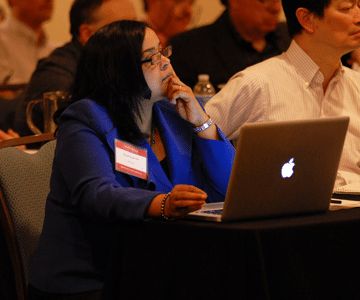Chronic Lymphocytic Leukemia Endpoints and Clinical Research Scientific Workshop
In the early 2000s, the research community witnessed a proliferation of experimental therapies for the treatment of chronic lymphocytic leukemia (CLL). With several exciting new agents in development for CLL, the nation’s leading experts felt a forum was needed to discuss their use and impact in the clinical setting.
At that time, clinical experience with new classes of pathway inhibiting drugs in the treatment of CLL, for example, shown regression in lymph nodes and disease-related symptoms but was accompanied by a transient increase in peripheral blood lymphocyte count. Despite apparent clinical benefit, this type of reaction to the drug did not fulfill the published CLL response criteria to qualify for a complete or partial response. Thus, researchers were concerned that FDA drug approval could be jeopardized, limiting the availability for a beneficial treatment to reach and help patients. The experts turned to the Lymphoma Research Foundation (LRF) to convene a scientific workshop that would provide a forum during which experts in the field could build consensus on the question, “What is a clinically meaningful response?” in this type of investigational setting. Looking at unconventional responses to unconventional drugs, the workshop and LRF’s scientific advisors sought to address these issues and formulate an answer.
Ultimately, the workshop addressed concerns and allowed for thoughtful debate surrounding the criteria developed by the National Cancer Institute in 1988 and 1996 and subsequently built upon by the International Workshop on CLL of 2008. Reporting in an article in the Journal of Clinical Oncology, Bruce Cheson, MD, FACP, FAAAS, FASCO, the then-Chair of the LRF Scientific Advisory Board, and his co-authors make clear the reasons for this discrepant possibility and urged the FDA and investigators to take extra care in judging new therapeutics.
Resources
- “Novel Targeted Agents and the Need to Refine Clinical End Points in Chronic Lymphocytic Leukemia.” Journal of Clinical Oncology. August 2012.


